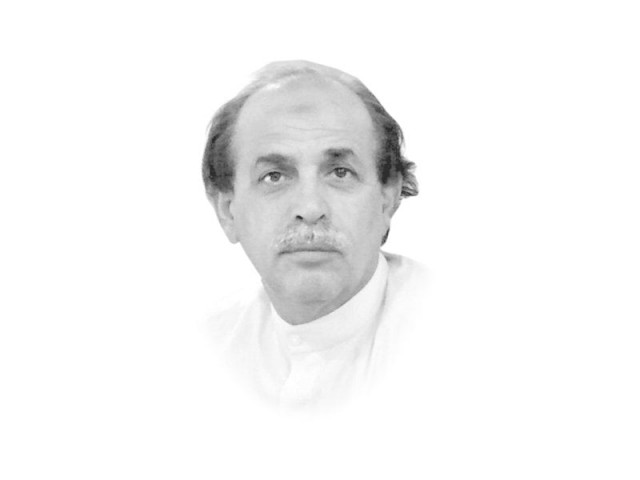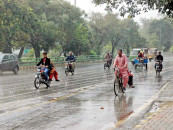Bringing back the youth in politics
Nonetheless, credit for making youth a part of mainstream politics goes to none other than Bhutto

Shamim Shahid is the city editor of the Peshawar edition. PHOTO: FILE
The younger generation of any nation is an important and valuable asset of the country. Without their active involvement in politics, agriculture, economics, education, research and science, the challenges which prevail can be extremely hard to tackle. Significant threats such as extremism and terrorism need the country’s youth.
Fervour struck youth
Prior to former prime minister Zulfikar Ali Bhutto’s emphasis on the younger generation, Hameed Nizami facilitated its engagement in politics by founding and heading Muslim Students Federation in 1930s.
Nonetheless, credit for making youth a part of mainstream politics goes to none other than Bhutto. He ensured student unions were an important part of college life.
Till the end of the 1970s, student unions played an important role in not only national politics and shaping public opinion, but also in generating leading politicians in the country – some of whom still occupy important ministerial offices at the Centre and in the provinces.
A bumpy ride
The process of generating politicians via student unions was terminated when former military dictator Ziaul Haq declared it a threat to his rule and his self-styled Islamisation.
Although federations and organisations affiliated with progressive and democratic-minded political parties agitated, so-called Islamists who were an integral part of Zia’s military set up remained silent.
In 1982-83, a large number of students who resisted dictatorial decisions were detained or coerced into leaving the country.
Even though students tried to remain engaged in politics, soon a large vacuum appeared in national politics. Ironically, this was soon filled by religious groups and factions.
Reigniting the spark
In the present era, Pakistan Tehreek-e-Insaf Chairperson Imran Khan realised the importance of the young generation after the blunder of boycotting 2008 general elections.
After those polls, Imran and his associates not only focused on mustering the support of “influential individuals and families” but also the youth. NADRA data and voter lists made work easy for Imran.
The PTI chief assembled and won the support of the young generation which enabled him to promote his party and emerge victorious in Khyber-Pakhtunkhwa.
After 2013, leaders of several political parties realised their folly and a majority of them—Awami National Party and Jamaat-e-Islami in particular—initiated steps to reactivate their youth wings.
In early 1990s, late Qazi Hussain Ahmad was the first ever JI leader to establish its youth wing, Shabab-e-Milli, which even arranged concerts during the 1993 election process.
This wing also held a two-day sports festival at Parda Bagh on Friday in the provincial capital to muster support of the youth.
Compared to others, the PTI leadership has made a comprehensive plan to channel the energies of its youth.
The younger generation supporting Imran’s party has made valuable contribution in several aspects, but most impressively in working on the environment of the province. Most of them serve as volunteers in plantation, Clean and Green Peshawar and several other campaigns. The PTI youth also play a key role in promoting the party and defending K-P on social media.
The ruling junta if sincere in its claims of eradicating extremism, terrorism, poverty and other socio-economic evils, needs to restore student unions, which can produce dedicated, competent and honest leadership for the country.
Published in The Express Tribune, January 18th, 2016.













COMMENTS
Comments are moderated and generally will be posted if they are on-topic and not abusive.
For more information, please see our Comments FAQ